Hey there, adventurer! Thinking about settling down in the Big Sky Country? Well, let’s buckle up our boots and dive into the nitty-gritty of Montana living.
Prepare to be mesmerized by the natural beauty that Montana has to offer. From Yellowstone National Park to Glacier National Park, this state is an outdoor enthusiast’s playground.
Montana living is not only about summer hikes and snowy winter sports. We’ll tackle its unpredictable weather, high property taxes, and slower pace of life as well.
I’ve got your back with insider tips on how to navigate the housing costs and job market, as well as the close-knit communities that will make you feel right at home.
So, whether you’re seeking a sense of community, endless opportunities for outdoor activities, or simply a new chapter in your life, Montana has plenty to offer.
Join me on this journey as we explore the pros and cons of Montana living, and discover why this state is more than just a postcard-perfect destination.
Remember, it’s about finding the perfect balance amidst the wild adventure that is Montana living. Let’s embark on this journey together, shall we?
The Pros of Montana Living

Living in The Big Sky Country is a dream come true for outdoor enthusiasts and nature lovers. Imagine waking up to breathtaking views of Yellowstone National Park, with its stunning beauty just a stone’s throw away.
Montana’s wide-open spaces and majestic Rocky Mountains offer endless opportunities for outdoor activities like hiking, mountain biking, and winter sports.
But the state is not just about the great outdoors and rugged mountain ranges. Montana’s tight-knit communities and welcoming atmosphere complement a thriving job market for career growth.
So, if you’re ready for a slower pace, a vibrant outdoor scene, and a strong sense of community, Montana living is your ticket to a life filled with endless adventure and natural wonders.
1. Enjoy Stunning Natural Beauty

In Montana, you can enjoy unlimited access to nature that surrounds you at every turn. From diverse landscapes to majestic mountains, and dense forests to sparkling bodies of water, this state has it all.
One of the crown jewels of Montana is Yellowstone National Park. Established in 1872 as the world’s first national park, Yellowstone is a testament to the exquisite wonders of nature.
Here, you can witness geothermal marvels like the iconic Old Faithful Geyser, explore colorful hot springs, and marvel at bubbling mud pots.
The park is a hiker’s paradise, with numerous trails that showcase the park’s untouched land and abundant wildlife. Don’t forget the world-class rivers for fishing, kayaking, and rafting.
Another must-visit destination in Montana is Glacier National Park. Established in 1910, this park offers breathtaking vistas of towering mountains, pristine lakes, and, of course, glaciers.
It’s a paradise for outdoor enthusiasts, with endless activities such as hiking, camping, and wildlife spotting. The glaciers are a breathtaking reminder of climate change’s impact on our planet.
2. Experience Year-Round Outdoor Fun

From horse riding and boating to fishing and paddleboarding, Montana offers a wide range of water-based activities that will satisfy any water lover’s cravings.
Even when winter comes around in Montana, the fun doesn’t stop. With its vast mountain ranges and abundant snowfall, the state is a haven for winter sports enthusiasts, providing all-year-round fun.
Skiing, snowboarding, snowshoeing, and snowmobiling are just a few of the thrilling activities you can enjoy in the snowy landscapes.
And don’t forget about the hot springs! Soaking in these natural mineral-rich pools is the perfect way to relax and unwind after a day of outdoor adventure.
For those seeking a more unique experience, Montana has plenty to offer. Imagine mushing through the snow-covered wilderness with a team of sled dogs or scaling icy cliffs while ice climbing.
In Montana, the beauty of nature is not reserved for a select few months out of the year. It is not confined to the pages of a calendar. It is a moment-to-moment experience that can be enjoyed year-round.
Read more about Fun Things to Do in Montana.
3. Bask in Beautiful Summers
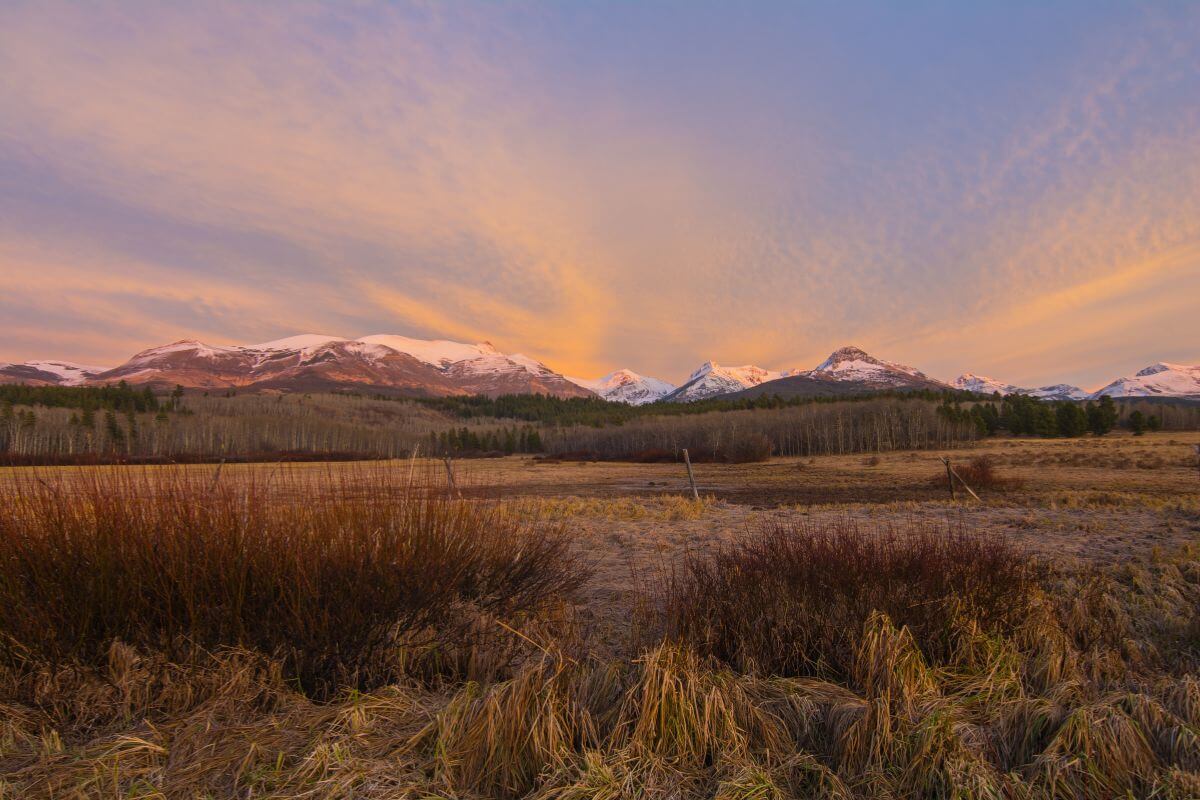
The summer weather is just perfect, with warm temperatures that beckon you to venture outdoors and embrace the natural beauty that surrounds you.
Montana summer months last from June to September, with an average temperature above 74°F. The hottest month of the year is July, with an average high of 83°F and a low of 54°F.
Warm summers are the perfect time to venture into Montana’s stunning wilderness for outdoor activities.
Explore the beauty of places like Glacier National Park and Yellowstone National Park, where you can enjoy extensive hiking trails, go mountain biking, or spot wildlife.
Alternatively, you can spend your days kayaking, rafting, or canoeing on the Missouri River
4. Enjoy Low Unemployment Rate

Since January 2021, Montana has been on a steady trajectory of growth, creating over 34,000 jobs in various sectors.
Even in the face of national economic challenges, this state has forged ahead, witnessing labor force growth and recording its highest total employment ever.
Speaking of employment, Montana achieved something truly remarkable in February 2023 – a historically low unemployment rate of just 2.4%.
As of August 2023, Montana’s average unemployment rate is 2.5%, and the number of unemployed Montanans has fallen by more than 34%
This is the kind of statistic that sets it apart from the rest, making it the 4th lowest in the whole country. Imagine living in a place where job opportunities are abundant, and the sense of security is palpable.
5. Montana Welcomes Retirees

Montana, with its natural beauty, abundance of recreational activities, and healthy population, warmly welcomes retirees with open arms.
The state’s healthy population ensures access to healthcare services and a vibrant community. When it comes to choosing where to settle down, retirees have several popular destinations to consider.
Kalispell, Butte-Silver Bow, Billings, Great Falls, and Missoula are just a few of the cities that offer a mix of modern amenities and a close-knit community to retire in Montana.
Montana won’t tax your Social Security benefits if your adjusted gross income (AGI) is below the specified level ($25,000 for single filers and $32,000 for joint filers).
Additionally, pensions and other retirement accounts may qualify for a partial exemption in 2023, providing retirees with added financial stability.
Read more about why you would want to retire in Montana.
6. Find Affordable Living
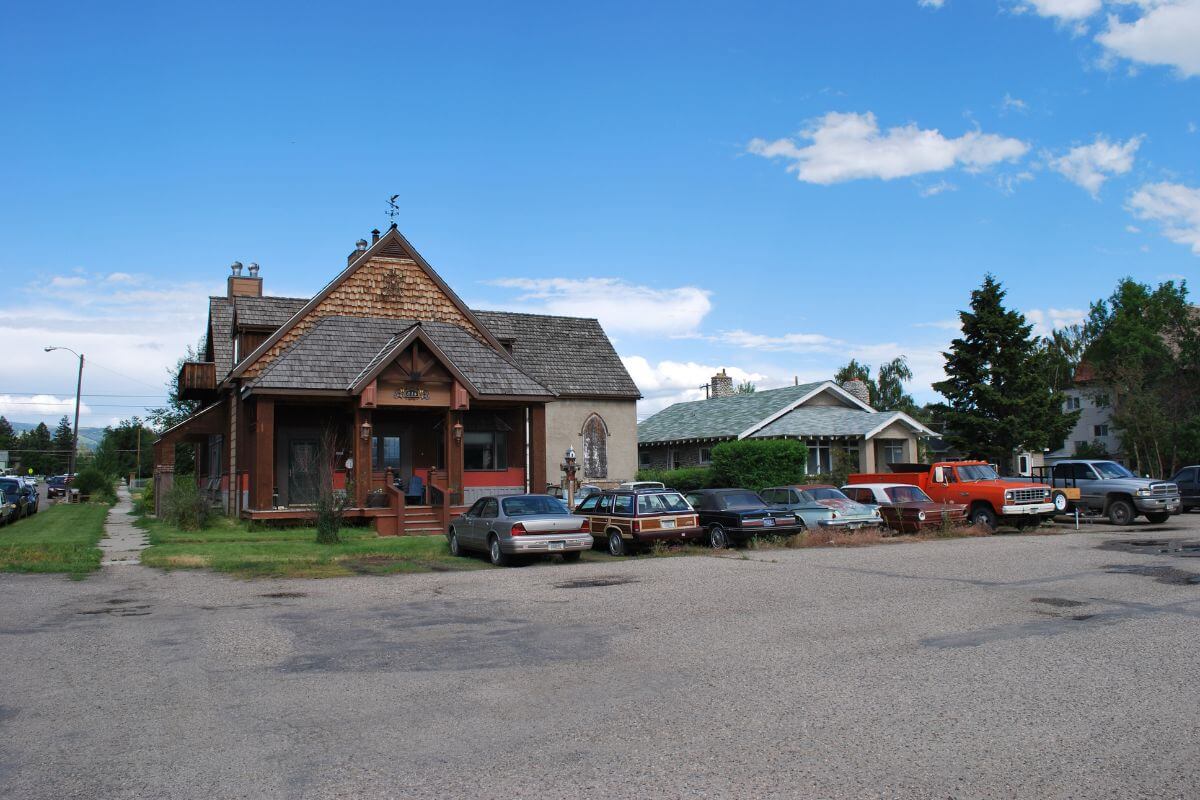
With an average cost of living of $47,887 per year, significantly lower than the national average of $61,334, residents’ hard-earned money can go much further in the Big Sky State.
But it’s not just the lower overall cost of living that makes Montana an attractive option. The utility prices in Montana are also lower than the national average.
Here’s a table showing differences in utility prices:
| Prices | Montana | U.S. Average |
|---|---|---|
| Residential | 12.82 cents/kWh | 16.14 cents/kWh |
| Commercial | 12.27 cents/kWh | 12.31 cents/kWh |
| Industrial | 5.17 cents/kWh | 7.75 cents/kWh |
Plus, with the scarcity of housing in some major cities, the median home price in Montana remains reasonable, making homeownership a more attainable goal.
Transportation costs in Montana are also relatively affordable, allowing residents to go around and explore the state without draining their bank accounts.
In Montana, the annual food cost is around $3,971, roughly $331 per month, significantly cheaper than the national average of $5,259, or about $438 per month.
These savings on bills mean more money in your pocket to spend on activities, savings, and other important priorities.
- Learn more about Montana’s Low-cost Living
7. Welcome Pets in a Pet-Friendly Environment

Montana is a haven for animal enthusiasts, thanks to its pet-friendly environment.
Whether it’s exploring the great outdoors or finding a cozy place to stay, the state’s love for dogs and abundance of outdoor areas make it a perfect destination for furry friends.
When it comes to environment and accommodations, Montana goes above and beyond in its pet-friendly offerings.
Many hotels, vacation rentals, bed & breakfasts, and campgrounds welcome pets with open arms, allowing them to stay with their owners for an additional fee.
Here are the names of some of the hotels and accommodations that are welcoming to pets:
- La Quinta Inn and Suites by Wyndham Billings
- Yellowstone House (vacation rental)
- Blue Mountain Bed and Breakfast
- Under Canvas Yellowstone (campground)
8. Embrace the Strong Ranching Culture

Embracing the strong ranching culture is 2nd nature here in Montana. It’s not just a way of life; it’s a rich heritage that shapes communities and fuels the economy.
With a thriving agriculture industry, Montana stands tall as a leader in the production of various goods. Certified organic wheat, lentils, and honey are just a few of the treasures that fertile lands yield.
Montana’s agricultural industry is deeply rooted in a rich history. The land provides the perfect conditions for growing crops, thanks to the sunshine, nutrient-rich soil, and pure water sources.
With almost 28,000 farms and ranches spread across a staggering 59.7 million acres, Montana’s agricultural landscape is grand in scale.
These farming operations are exceptionally large, averaging a whopping 2,134 acres each. That’s a testament to the endless possibilities that our wide-open spaces offer.
Montana’s diversity of communities forms a vibrant tapestry, where the rich ranching culture blends harmoniously with the essence of the land.
9. Reap Tax Benefits

As a resident, you’ll enjoy the benefits of low-income tax rates, ranging from just 1% to a modest 6.75%. That means more money in your pocket to spend on the things that matter most to you.
Montana also has the advantage of being one of the few states with no sales tax. No more worrying about adding extra costs to your purchases.
It’s a fair share that businesses contribute to the state’s economy, ensuring that everyone benefits from the opportunities that Montana has to offer.
For property tax, the state’s average effective rate is 0.74%, well below the U.S. average, which currently stands at 0.99%.
10. Discover Good Job Opportunities

Despite its low population density, Montana boasts flourishing industries that provide ample job opportunities for its residents.
From agriculture to tourism to timber production, Montana’s diverse economy supports a range of industries that are thriving.
Whether you’re interested in working on a ranch, welcoming visitors to our stunning national parks, or contributing to sustainable forestry practices, there’s a job for you in Montana.
Some of Montana’s top employers include the Blackfeet Tribe, Billings Clinic, Malmstrom Air Force Base, Kalispell Regional Healthcare, and the University of Montana.
These organizations not only offer stable employment but also contribute to the growth and vitality of their communities.
11. Outstanding Public Higher Education Opportunities
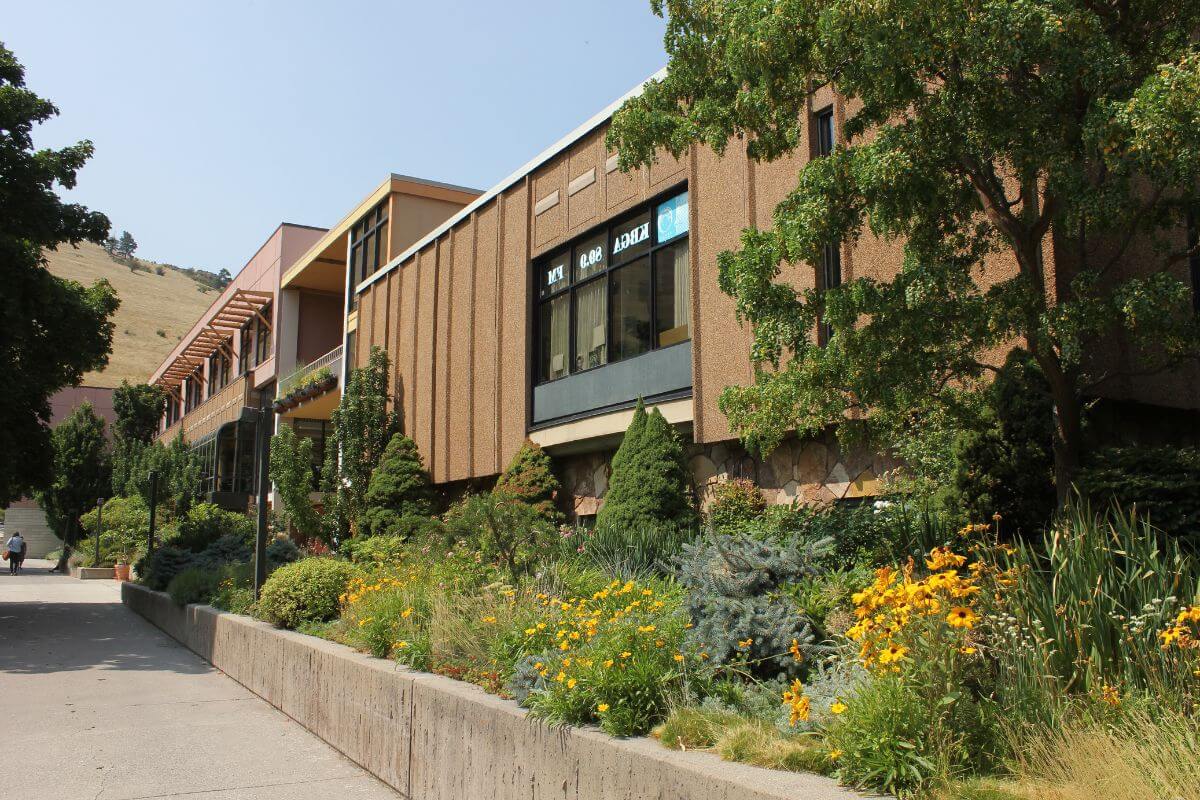
Montana offers outstanding public school opportunities that can provide a solid foundation for your future.
MSU, located in Bozeman, offers a wide range of academic programs, including engineering, business, agriculture, and the sciences.
The university is known for its research opportunities and dedicated faculty who are passionate about teaching.
The University of Montana, located in Missoula, also offers a diverse selection of academic programs, including humanities, social sciences, education, and the arts.
With its beautiful campus and vibrant community, the University of Montana provides an enriching and supportive environment.
With their excellent academic programs and commitment to success, MSU and the University of Montana give opportunities for students to achieve their educational goals.
- Learn more about leading colleges in Montana
The Cons of Montana Living
When it comes to living in Montana, there are a few cons that you should consider. Firstly, the weather can be a challenge, with cold temperatures in the winter months and storms throughout the year.
This can hinder outdoor plans and daily life. While Montana offers wide-open spaces and a sense of community, it may lack the amenities and access to the largest cities.
Despite these cons, Montana’s beauty, outdoor destinations, and close-knit community offer endless opportunities for those seeking a slower pace of life and a strong sense of connection to nature.
1. Face Limited Amenities
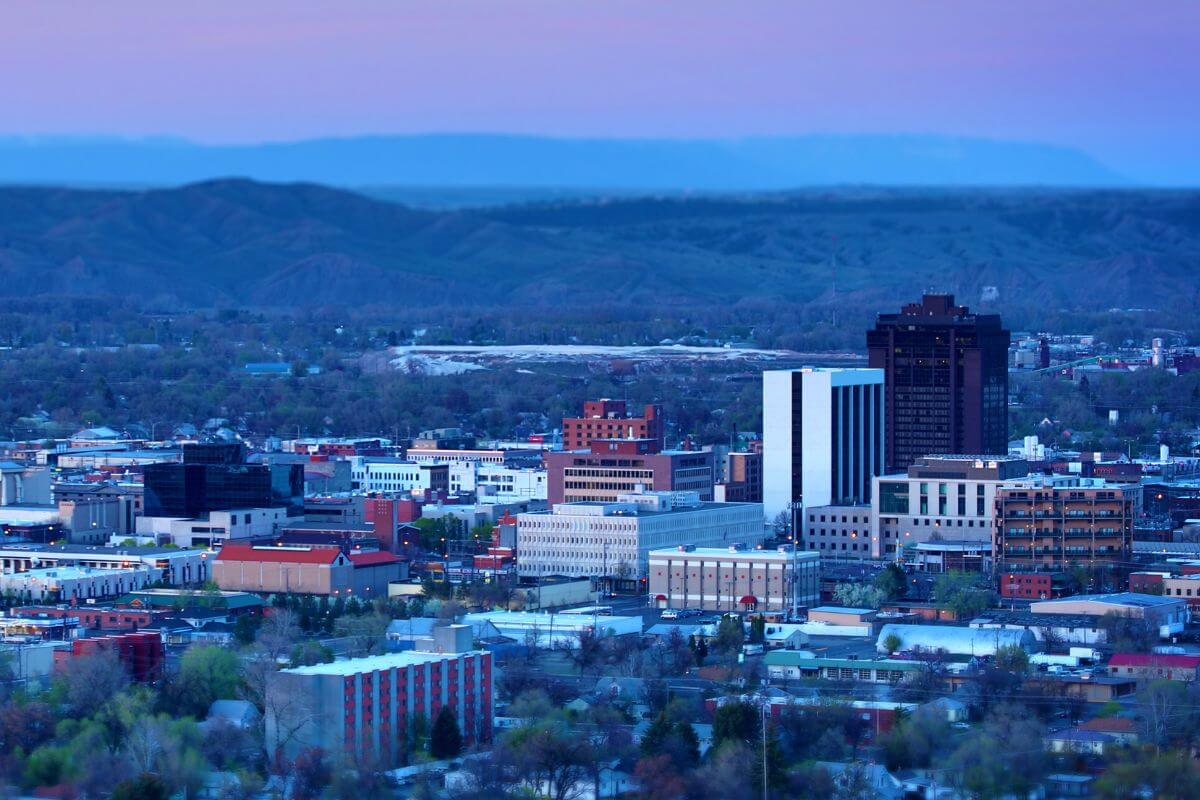
In rural communities of Montana, the distance to amenities and entertainment options, such as music venues, can be significant as the amenity list is scarce.
Larger cities like San Francisco or Los Angeles offer a vibrant entertainment scene with a variety of venues to choose from while settling down in remote Montana means giving up some of these conveniences.
The lack of easy access to entertainment can require some adjustment for those accustomed to a more vibrant nightlife or a constant flow of cultural events.
Public transportation options are limited in rural areas. Rideshare services like Uber and delivery services like DoorDash may also be less available, making it necessary to plan ahead for transportation and meals.
That being said, living with a limited variety of amenities in Montana also offers its own rewards.
While you may have to give up some of the comforts and conveniences of a more urban lifestyle, you will gain a greater appreciation for the beauty that surrounds you.
2. Deal With Inconsistent Mobile Network Coverage
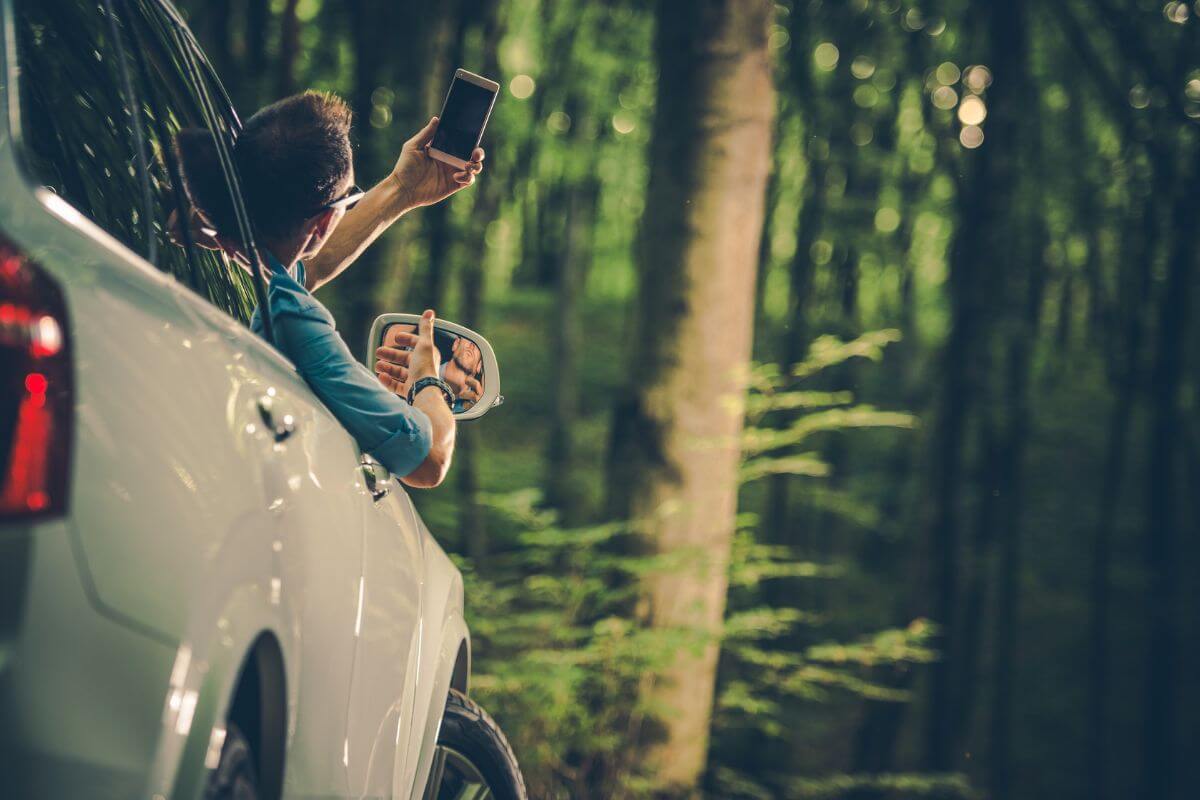
Due to the state’s vast and unpopulated areas, reliable and fast cell service and internet are not always available. This can be frustrating for those who rely heavily on their phones for communication or work.
In Montana, cell coverage varies across providers. AT&T offers strong coverage, while Verizon and T-Mobile provide fair coverage statewide. However, if you’re a Sprint user, the network is entirely absent.
Even with the other providers, coverage remains challenging in remote natural areas, regardless of the network used. Dealing with limited cell coverage requires some adaptability.
It’s essential to have navigation alternatives when exploring remote locations or venturing into the wilderness.
GPS devices, physical maps, and offline navigation apps can be invaluable tools to navigate without relying on a consistent cell signal. In emergency situations, it’s crucial to be prepared.
Having an emergency kit with essential supplies like food, water, a first aid kit, and a backup communication device, such as a satellite phone or a two-way radio, can provide peace of mind.
3. Lack of Public Transportation
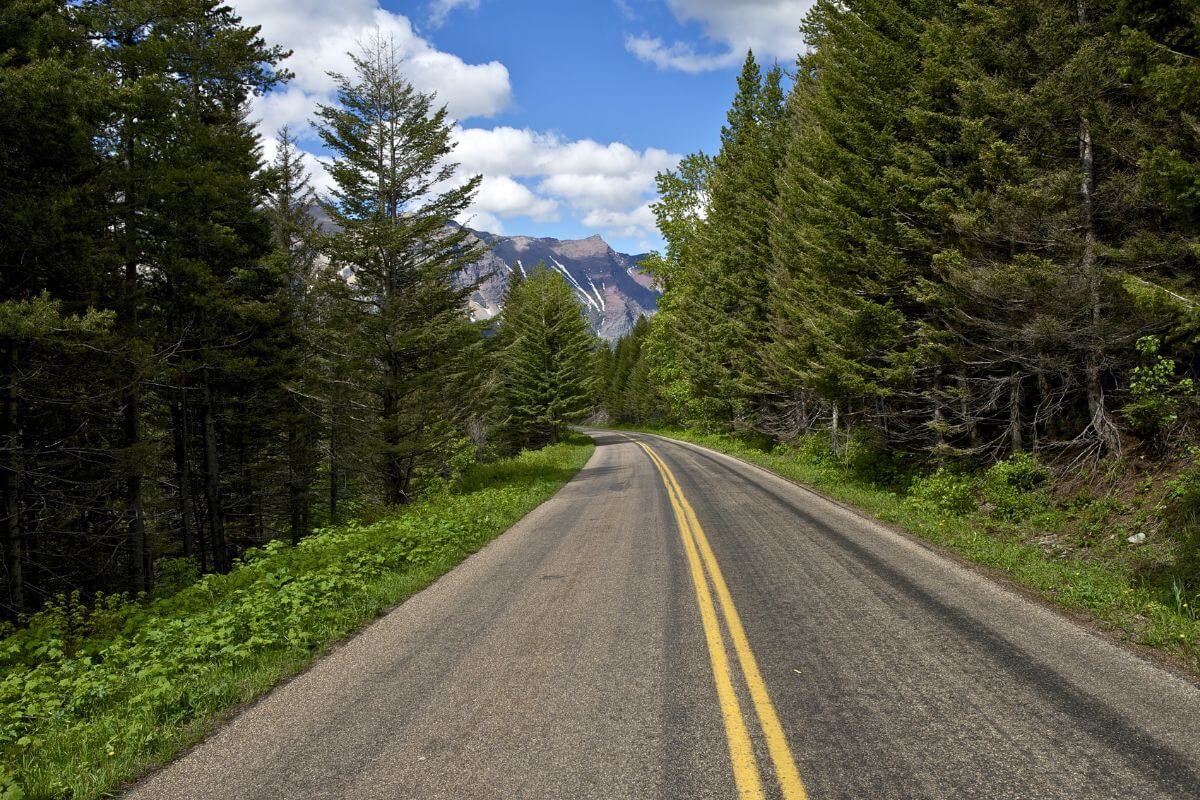
In Montana, once you venture outside the urban areas, public transportation becomes a rarity. It faces challenges that contribute to the limited availability of public transportation options.
Deteriorating infrastructure, safety concerns, capacity limitations, and funding shortages all play a role in shaping Montana’s transportation landscape, hindering both the economy and the quality of life.
Montana has a backlog of nearly $6.2 billion in improvements and upgrades for its transportation system. The lack of funding significantly hampers the state’s ability to address these crucial issues.
So, what does this mean for those who rely on public transportation or prefer not to drive? It means that alternative modes of transportation become essential.
Carpooling, biking, and walking are options in more populated areas, but once you head into the wide-open spaces, you’ll have to rely on yourself or find creative solutions to get where you need to go.
4. Require 4×4 Vehicles

Living in Montana may require owning a 4-wheel drive vehicle due to the challenging tough winter conditions, with heavy snowfall and icy roads. Navigating these conditions can be quite difficult.
One of the reasons why a 4×4 vehicle is recommended in Montana is because of the chewed-up rural roads where you’ll encounter gravel roads, dirt roads, and rough terrains that can strain your vehicle.
Having a sturdy and capable car, such as an SUV or a truck, can help you navigate these roads with ease.
Having a 4×4 vehicle can provide you with added traction and control. It gives you that extra grip to tackle slippery slopes and maneuver through snow-covered roads.
5. Encounter Scarce Housing
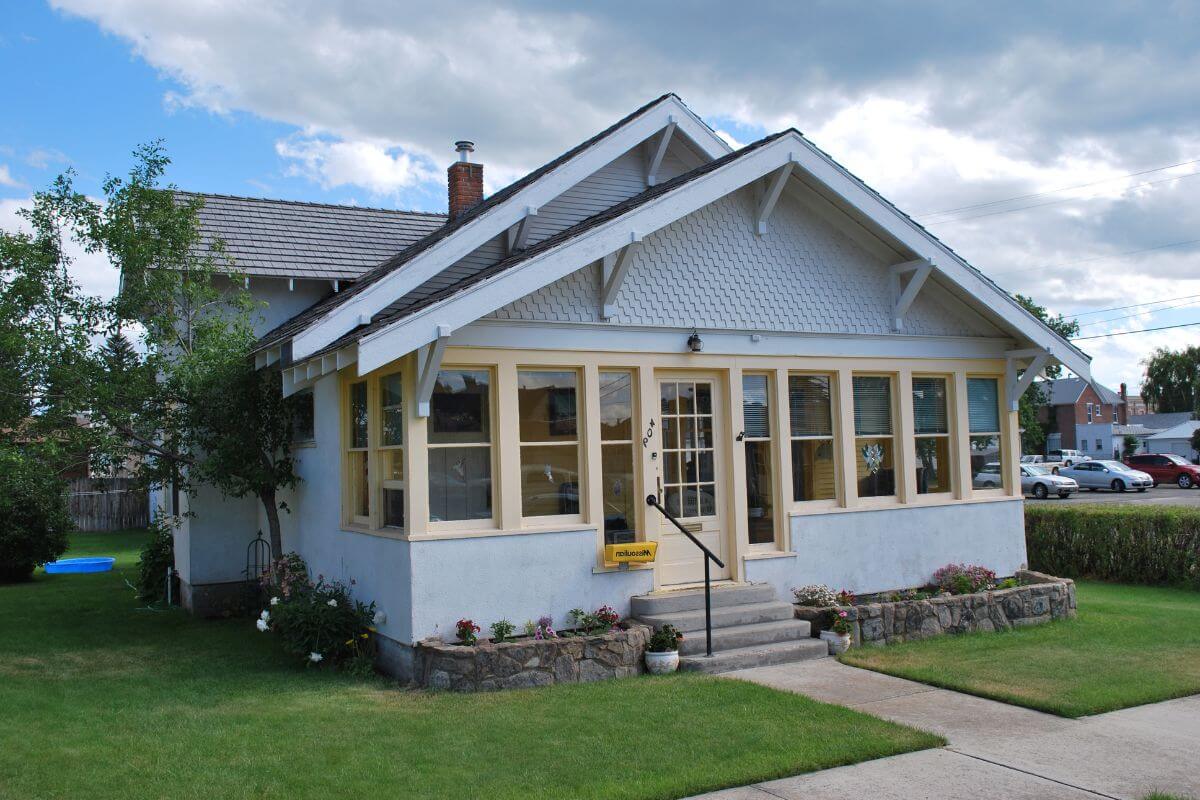
Montana faces an ongoing challenge when it comes to housing, with a scarcity of affordable options and a steep price tag that could make any budget-conscious individual break out in a cold sweat.
In large cities where the population centers thrive, the hunt for an affordable home becomes an uphill battle.
The average home price in Billing and Missoula are $367,116 and $512,346, respectively. Significantly more expensive than Montana’s median home value at $263,700.
The limited supply of housing puts a strain on the market, driving up prices and leaving many prospective residents feeling discouraged.
Montana’s strict building regulations and the scarcity of skilled tradespeople create additional roadblocks for homebuilders.
The frozen ground during the winter months shrinks the already shortened construction season, making it even more challenging to meet the demand for housing.
During the pandemic, as people flock to Montana seeking refuge, the housing supply simply cannot keep up, exacerbating the housing scarcity issue.
This surge in demand has led to skyrocketing prices, leaving many families struggling to find a place to call home.
In this unpredictable landscape of scarce housing and limited options, finding an affordable home in Montana can feel like searching for an oasis in the desert.
It requires resourcefulness, perseverance, and a willingness to think outside the box. But for those who dare to navigate this challenging terrain, the rewards of embracing the Montana lifestyle are worth it.
6. Endure Harsh Winters

From bone-chilling temperatures to rapidly changing weather conditions, the winter months in this rugged state can test even the most resilient souls.
Montana holds the national record for cold winter, with temperatures plunging as low as a bone-numbing 70°F below 0. That’s not just a chill in the air, that’s polar freeze!
The unpredictable weather is like a roulette wheel, with conditions shifting rapidly from milder spells to sudden blizzards and whiteout conditions.
The winter months last from November to February, with an average winter temperature below 40°F. The coldest month is December.
7. Limited Food Options
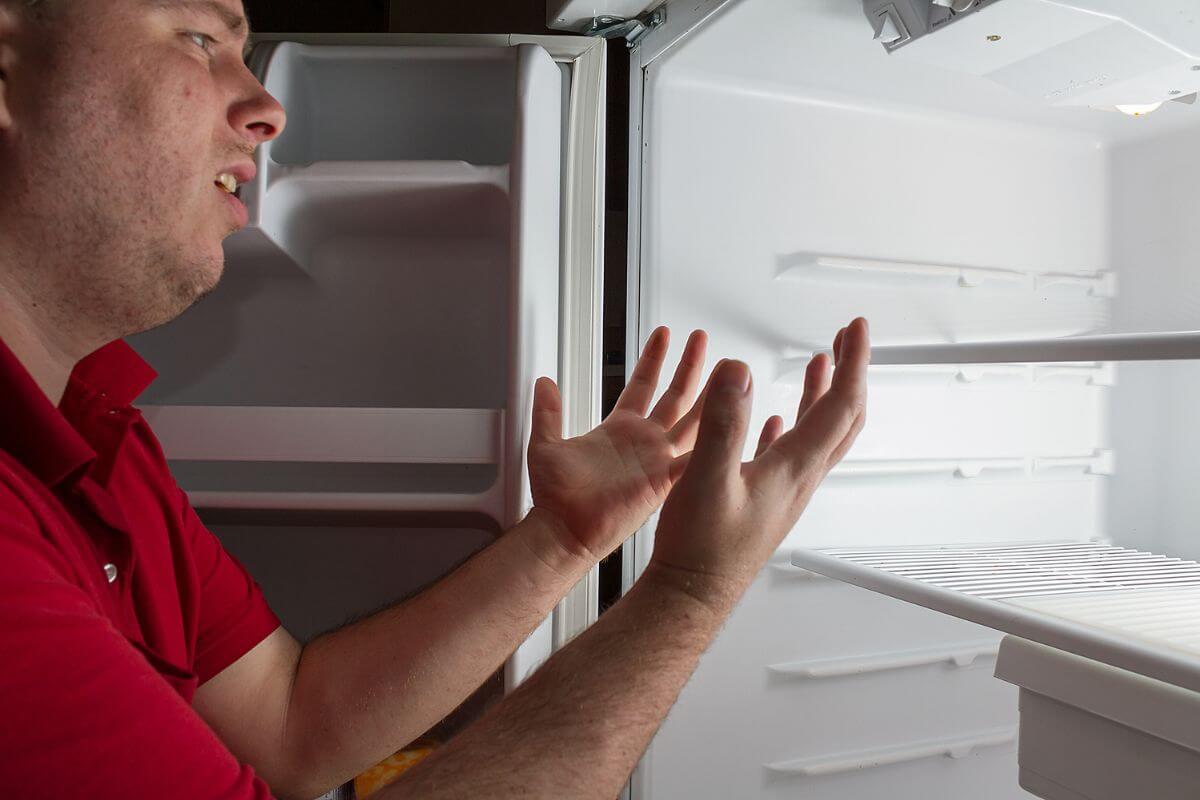
Due to the state’s rural nature and wide-open spaces, finding a wide variety of grocery stores and dining options can be quite challenging.
Limited access to nutritious food and fresh produce in Montana creates “food deserts,” where rural towns lack fresh produce within a 10-mile radius.
Additionally, food costs in some remote areas tend to be higher due to the longer distance from major cities and the cost of shipping.
Living in a rural county like Montana may mean having limited food options, but it also offers a unique lifestyle and a strong sense of community that can’t be found in larger cities.
8. Embrace Remote Living

One of the main challenges is the limited access to amenities and services that those in larger cities take for granted. Healthcare and education facilities may be further away, requiring longer travel times.
In order to navigate these challenges, it’s important to be proactive and prepared. Consider trying short-term leases in different areas to get a feel for what works best for you.
Living remotely in Montana also means being prepared for emergencies such as unpredictable weather that needs evacuations. So make sure to keep essential supplies stocked, such as food, water, and medical necessities.
Stay informed about weather conditions and have a plan in place for evacuation or sheltering in place if necessary.
Despite these challenges, one of the greatest benefits of remote living in Montana is the strong sense of community. In these close-knit towns, neighbors become friends and everyone looks out for each other.
You’ll find warmth and support that can be hard to come by in larger cities. The slower pace of life allows for deeper connections and a stronger sense of belonging.
- Learn more about living remotely and Homesteading in Montana
9. Handle Tourist Crowds
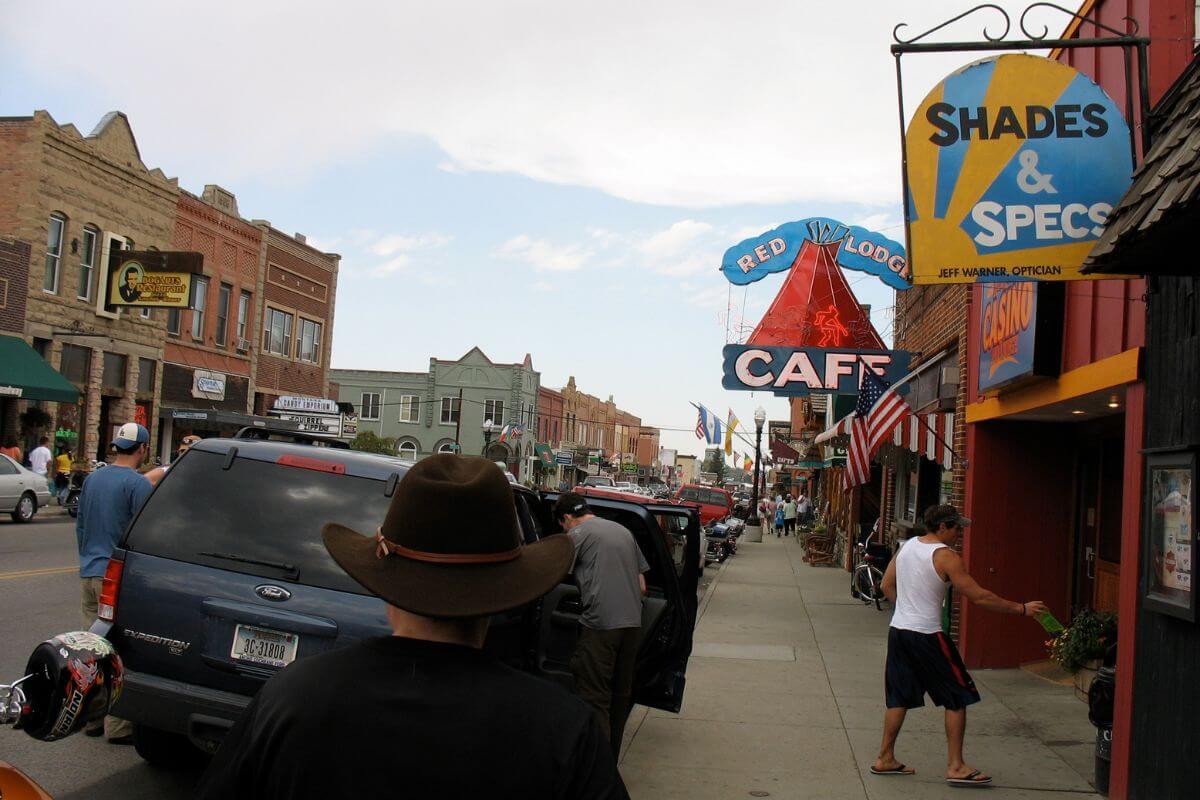
The influx of visitors during the summer and winter seasons brings life and energy to the state. On the other hand, it can sometimes lead to crowded areas and a sense of being overwhelmed.
With approximately 12.5 million people visiting Montana each year, it’s no wonder that certain areas experience high tourist volumes, causing congestion in popular destinations.
The strain on local infrastructure caused by the influx of tourists can be felt by residents. Services and resources may become more competitive, and it may take longer to access certain amenities.
It’s important to plan and be patient during these times, while also seeking out quieter areas that are off the beaten path.
While tourist crowds can present challenges, living in Montana offers a unique opportunity to experience the natural beauty and outdoor destinations that attract millions of visitors each year.
By being proactive and finding ways to navigate crowded areas, residents can still enjoy the incredible lifestyle that Montana has to offer.
10. Encounter Wildlife

Living in Montana provides the chance to encounter a diverse range of wildlife in their natural habitat. From grizzly bears to moose, residents must be ready for potential encounters with dangerous wildlife.
Montanan property owners in remote rural areas face a specific set of challenges related to property safety. Stray cattle are not an uncommon sight, sometimes resulting in property damage caused.
To ensure the safety of their families and land, they must always be vigilant and take necessary measures to protect their property.
Aside from having a different range of wildlife, Montana is a bear country indicating that it is a region known for having a significant bear population, particularly grizzly bears and black bears.
It’s crucial to understand the risks and coexist responsibly with these animals. This includes learning bear safety practices such as carrying bear spray and understanding their behavior and habitats.
11. Trends Take Their Time to Arrive
Living in Montana, trends take time to arrive. While the rest of the world may be obsessing over the latest fashion crazes, the Treasure State prioritizes practicality and weather-appropriate clothing.
You won’t find locals rushing to embrace the latest fads, because their focus is on functionality and comfort.
Given the unpredictable weather and vast landscapes of Montana, durable clothing is essential to withstand whatever nature brings. Trends may come and go, but practical clothing choices are to stay.
Part of the reason for this delay in trends reaching Montana is the slower pace of life. Residents are not caught up in the hustle and bustle of big cities, where trends can change overnight.
While the fashion capitals of the world may be flaunting the latest styles, Montanans will be rocking tried-and-true wardrobe of durable boots, cozy flannels, and weather-resistant jackets.
Montana Living Final Thoughts
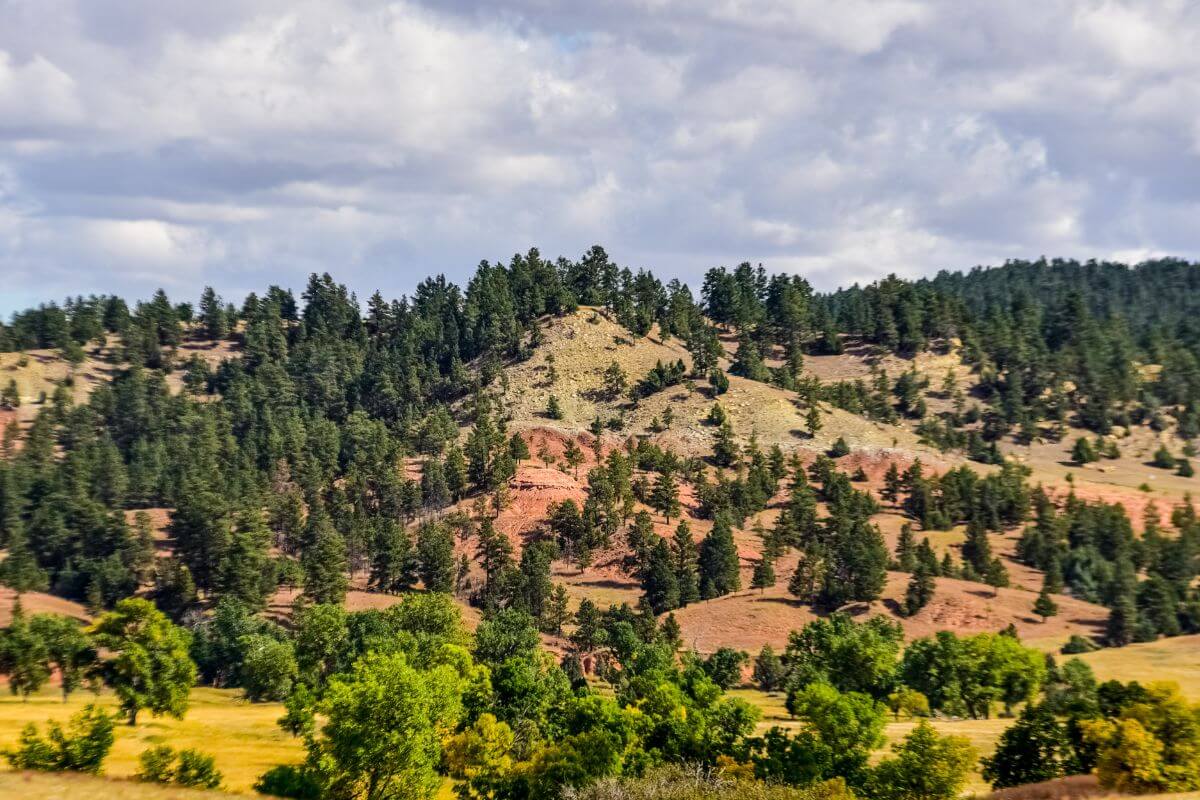
Living in Montana offers an excellent opportunity to immerse oneself in a unique type of lifestyle. This state boasts natural beauty, year-round outdoor activities, and a welcoming community culture.
However, it’s essential to consider the cons, such as limited amenities, harsh winters, and the need for 4×4 vehicles in challenging terrains.
Montana’s strong ranching culture, tax benefits, and affordable living make it an attractive destination, especially for retirees. The state’s public schools provide excellent opportunities for students.
While the state may lack some urban conveniences and face challenges like limited food options, it compensates with a close-knit community and low unemployment rates.
It’s a place where trends take their time to arrive, but practicality and durability are highly valued.
Ultimately, Montana living is about embracing the slower pace, connecting with nature, and becoming part of a community that looks out for one another.
Montana is a state where the beauty of American culture blends seamlessly with the rugged landscapes, making it a place to call home for those seeking a distinctive way of life.
Montana Living FAQs
1. Why Does Real Estate Cost So Much in Bozeman, Montana?
The high cost of housing in Bozeman, Montana, is primarily driven by increasing demand outpacing the supply of residential housing.
The area experiences high demand due to its proximity to Montana State University and other tourist attractions. This shortage in the housing market has led to rising home values and limited availability, causing prices to soar.
2. What Are the Best Places to Live in Montana?
The best places to live in Montana depend on individual preferences. For a quieter lifestyle, Whitefish offers a serene setting, while those seeking a larger city can consider Billings.
Other attractive options include Kalispell, Butte-Silver Bow, Great Falls, and Missoula, providing diverse choices for various lifestyle preferences.
3. How’s the Job Market in Montana?
Montana’s job market is thriving, achieving a record-high number of employed residents in July 2022, marking 27 consecutive months of job growth.
The state’s labor force expanded by 1,470 workers, and total employment grew by 712 workers.
To quench your fascination with Montana and gain deeper insights, stay connected and explore these captivating articles:
- Montana’s Best Residential Areas
- LGBTQ+ Acceptance in Montana
- Montana’s Environmental Challenges
- Planning a Montana Vacation
- https://news.mt.gov/Governors-Office/New_Record_Low_Montanas_Unemployment_Rate_Falls_to_2.4
- https://leg.mt.gov/content/Committees/Interim/2015-2016/Revenue-and-Transportation/Meetings/July-2015/Exhibit9.pdf
- https://www.umt.edu/this-is-montana/columns/stories/montana-winters.php
- https://lmi.mt.gov/_docs/Publications/EAG-Articles/1022-HousingAffordability.pdf
- https://news.mt.gov/Governors-Office/Montana_Job_Growth_Continues_Setting_Records
- https://www.eia.gov/state/print.php?sid=MT
- https://www.flickr.com/photos/39908901@N06/24904869759
- https://www.flickr.com/photos/phrenologist/6316242220/
- https://commons.wikimedia.org/wiki/File:Montana_Ranch_%288051770587%29.jpg
- https://www.flickr.com/photos/texasbackroads/32624975497
- https://www.flickr.com/photos/phrenologist/6316240514
- https://www.flickr.com/photos/maveric2003/209600143

